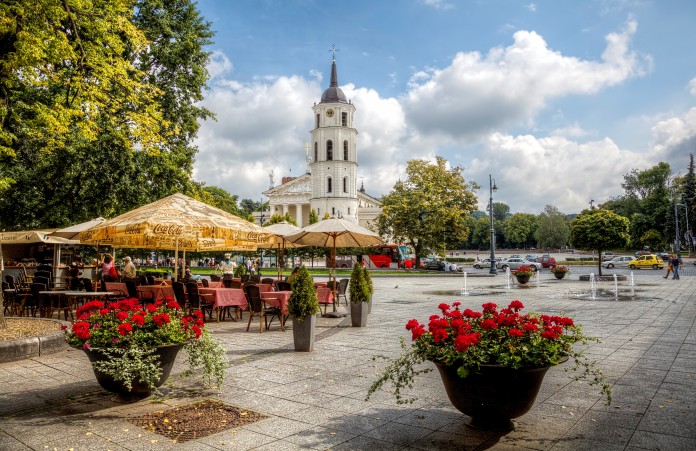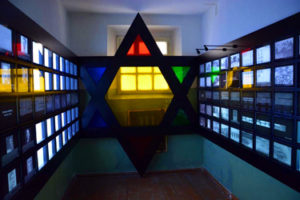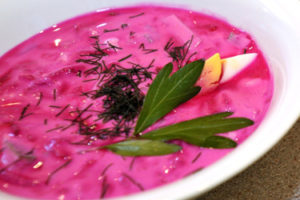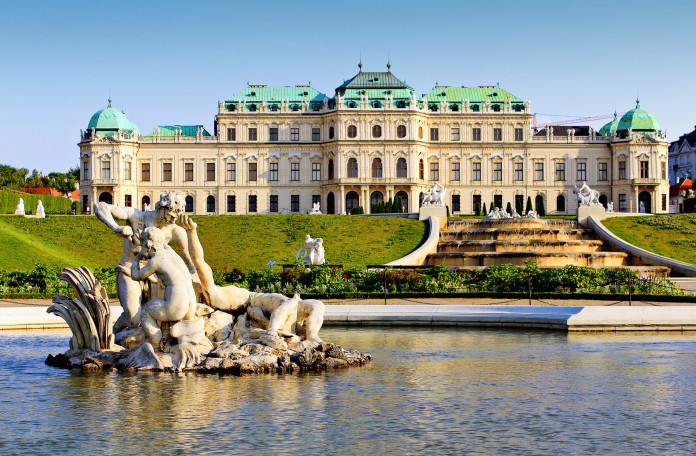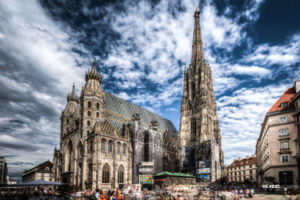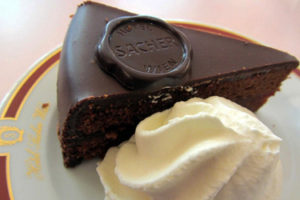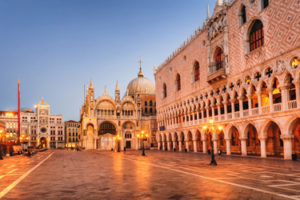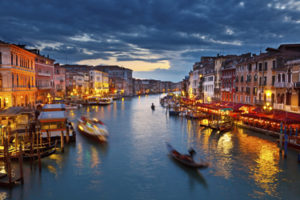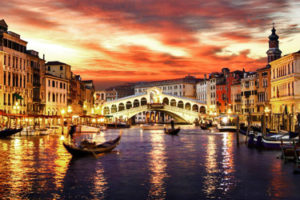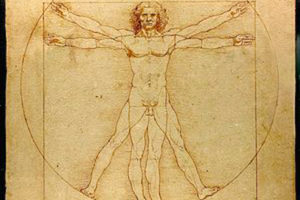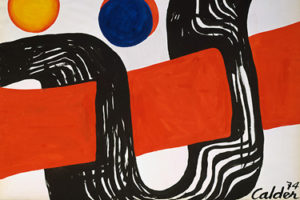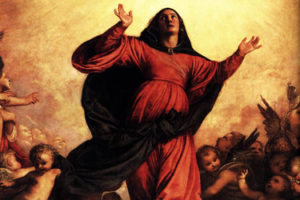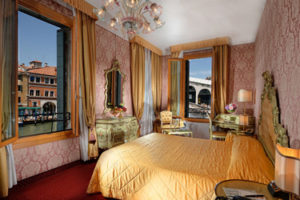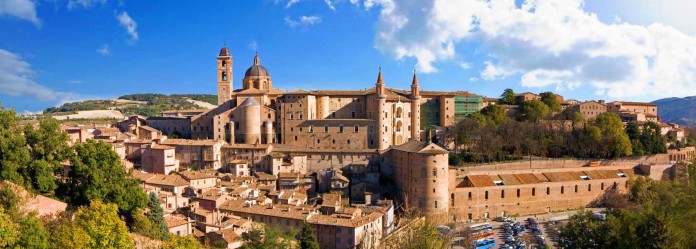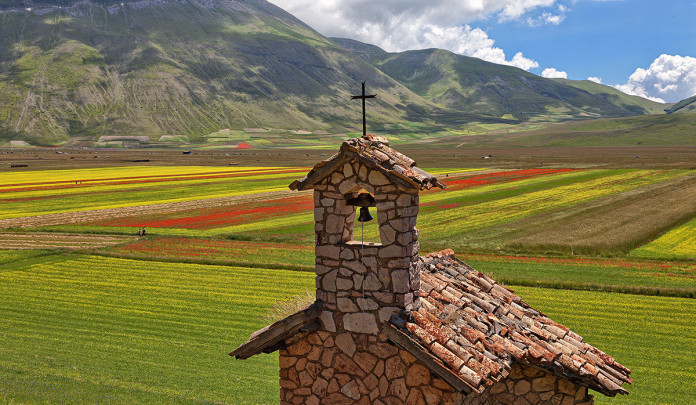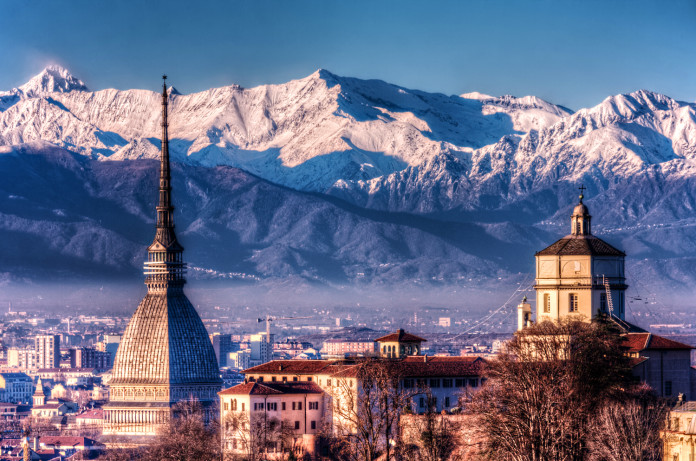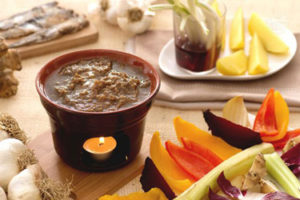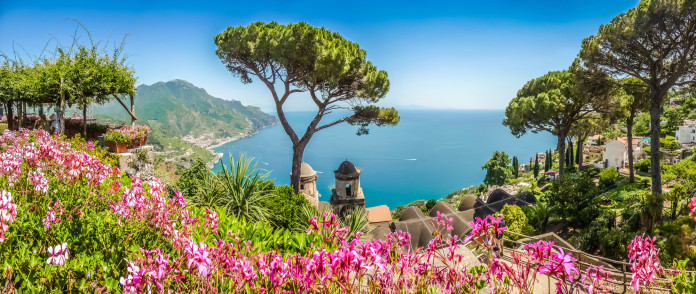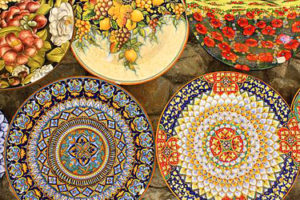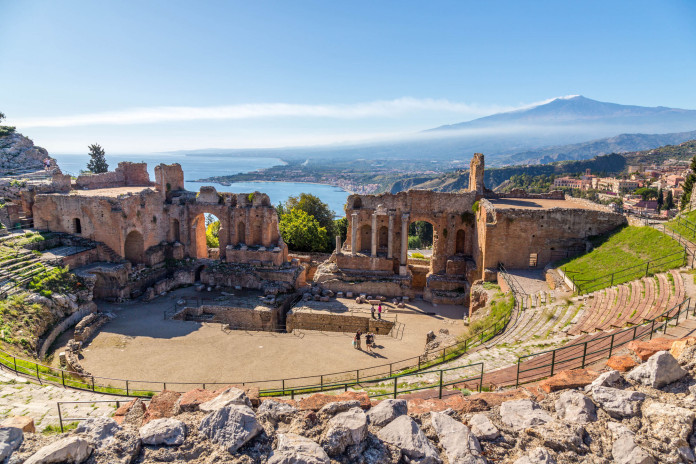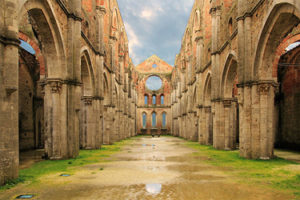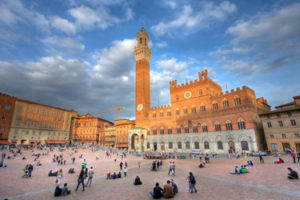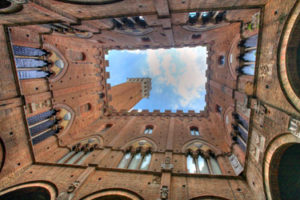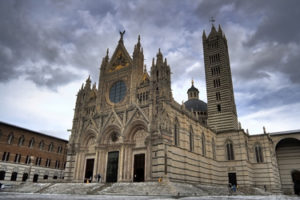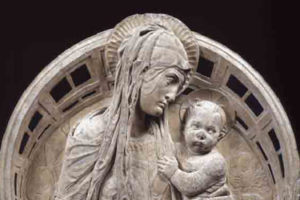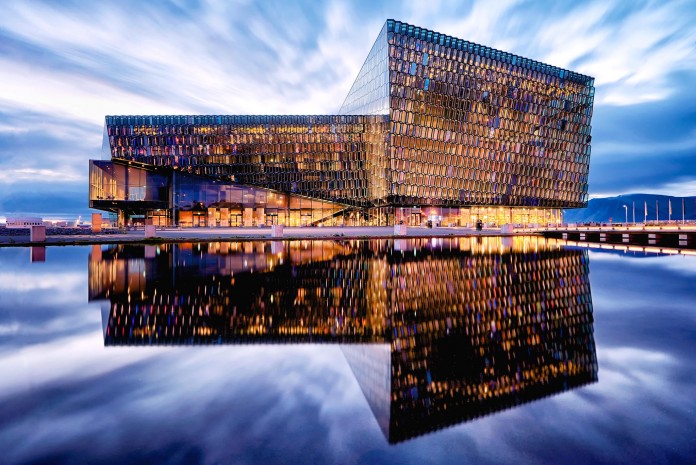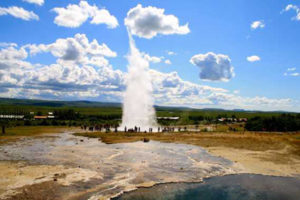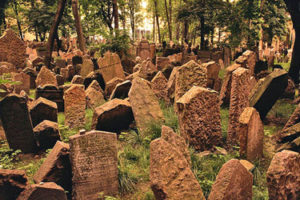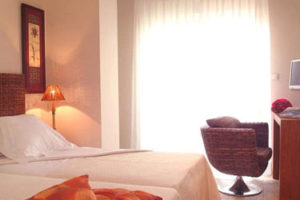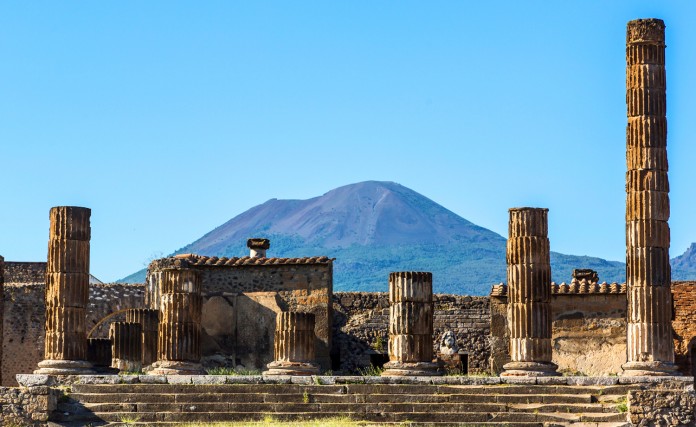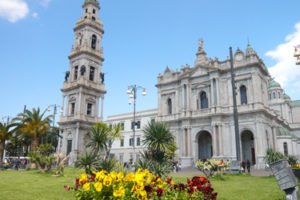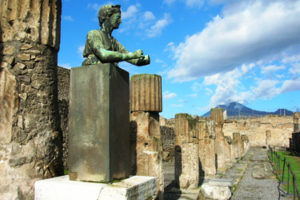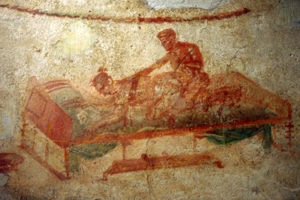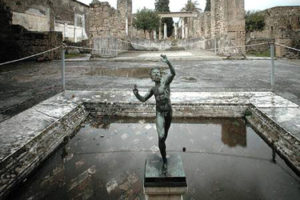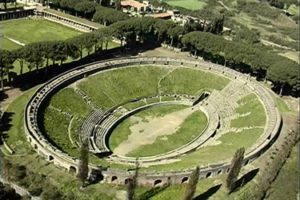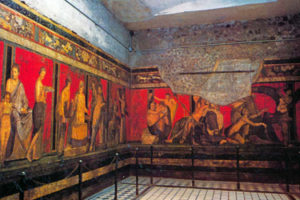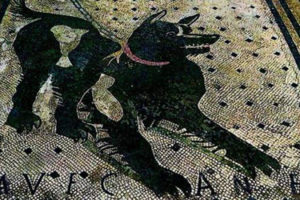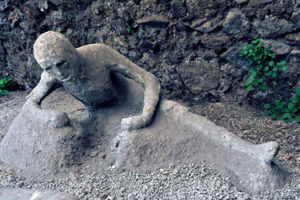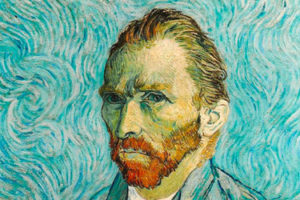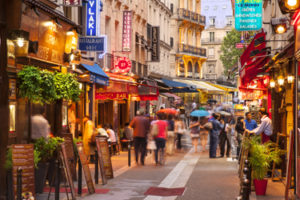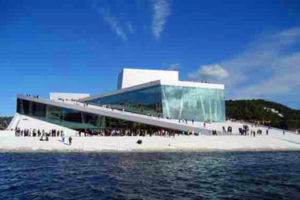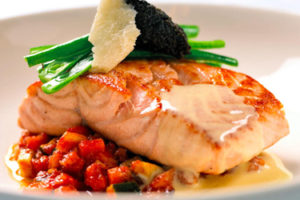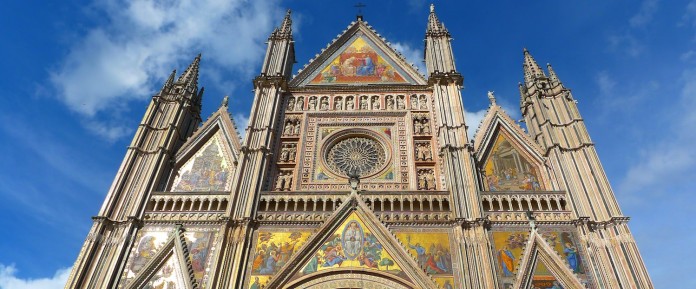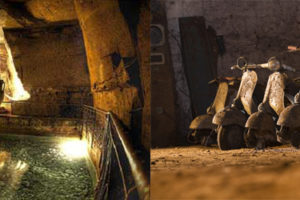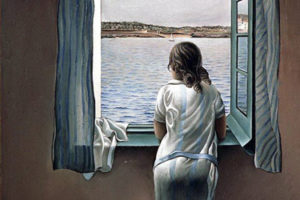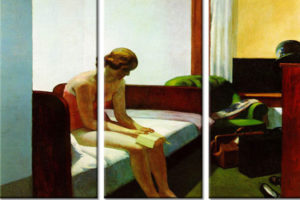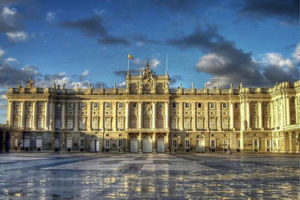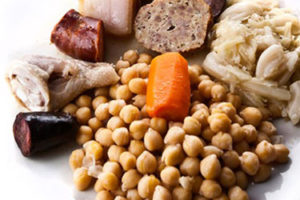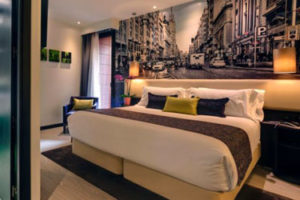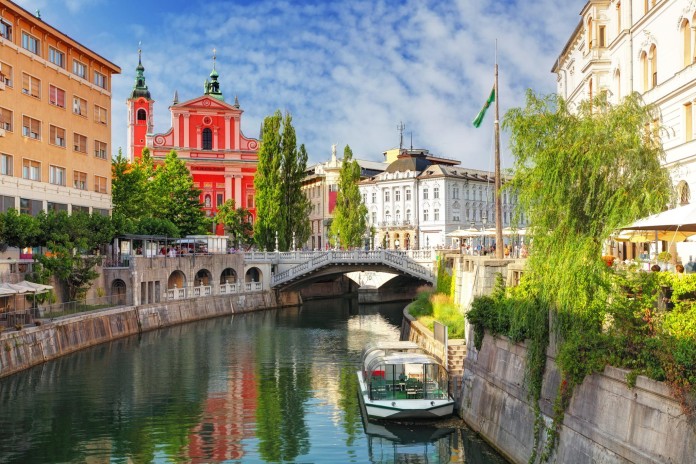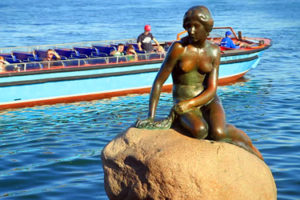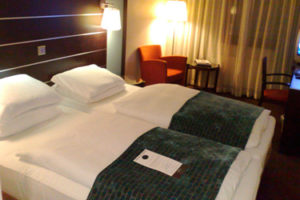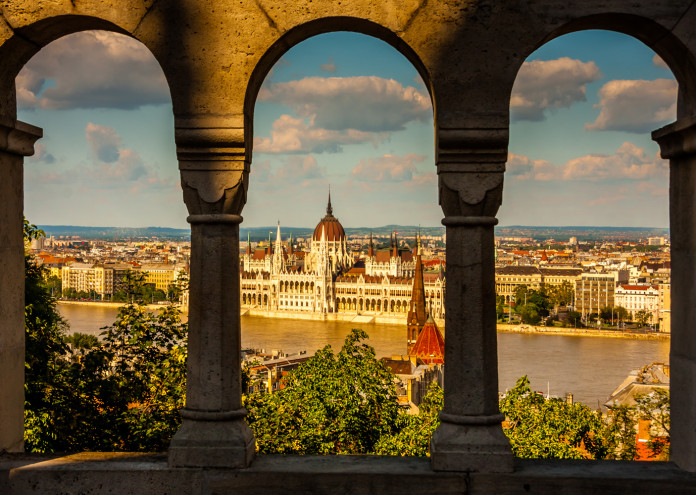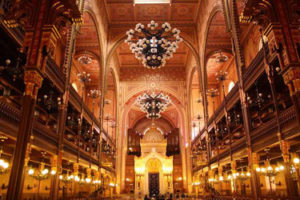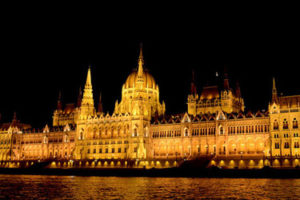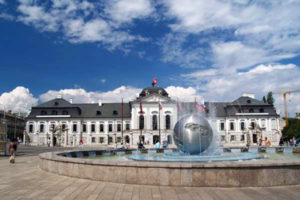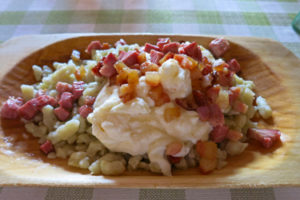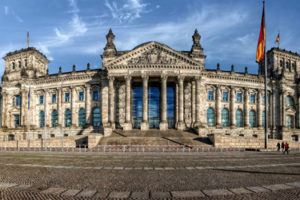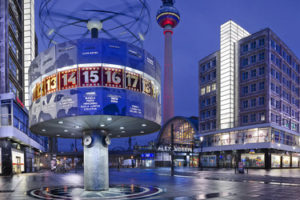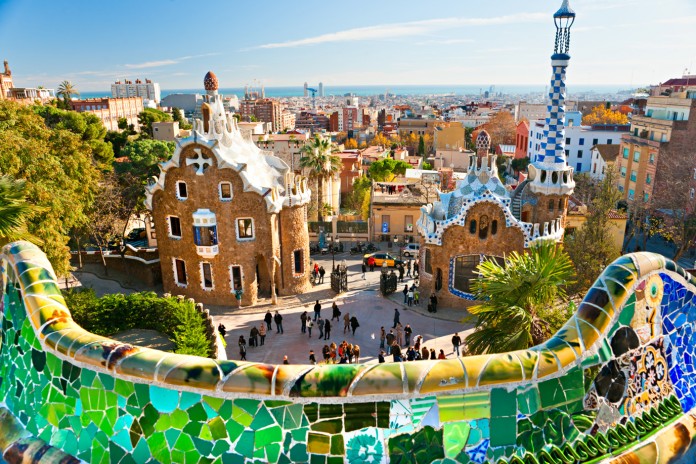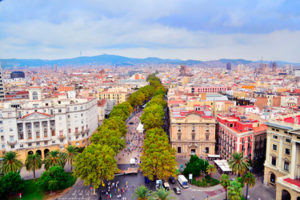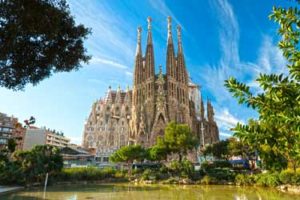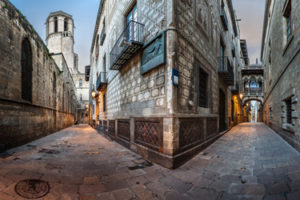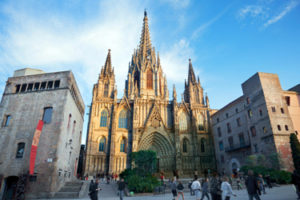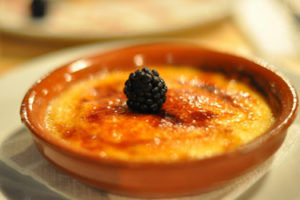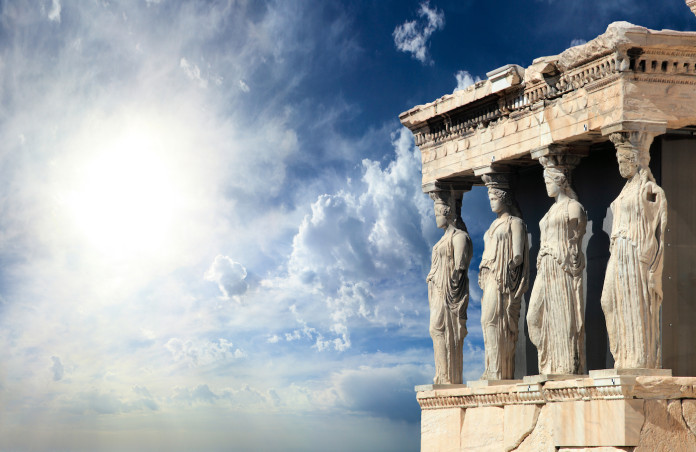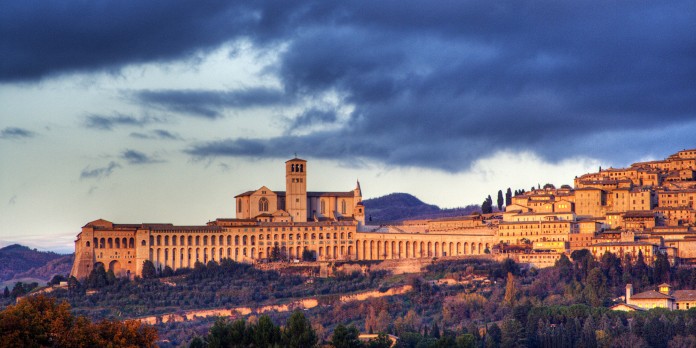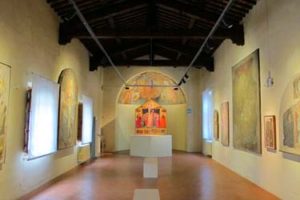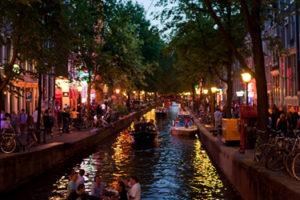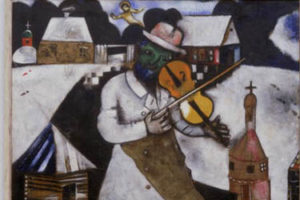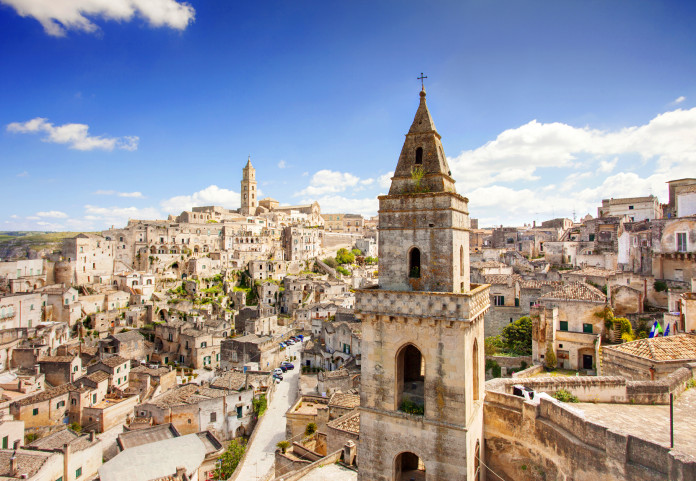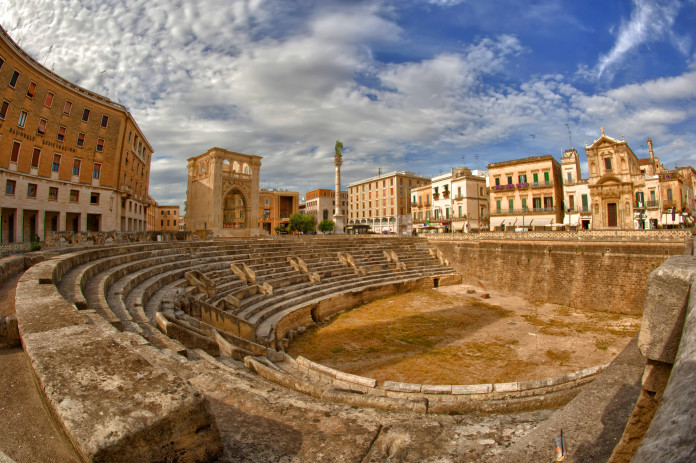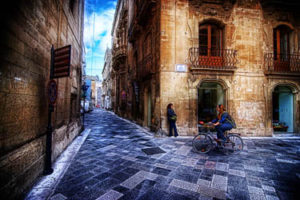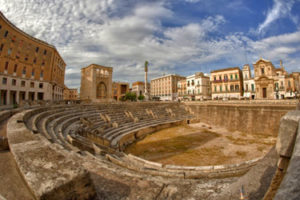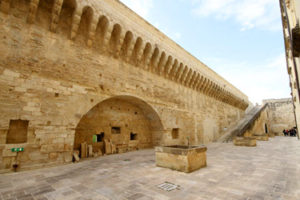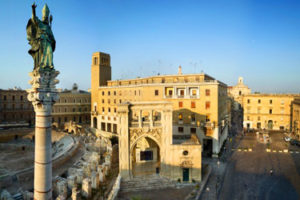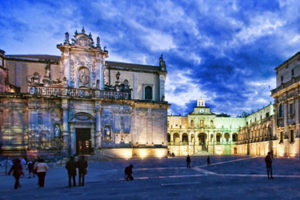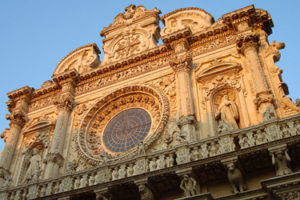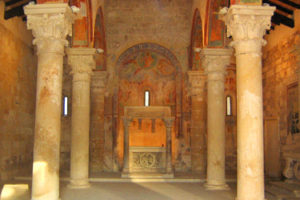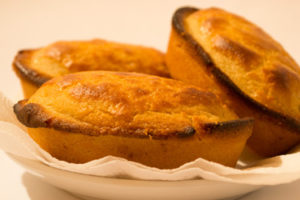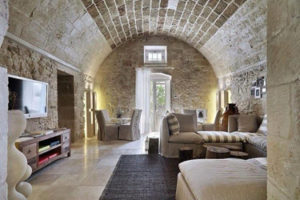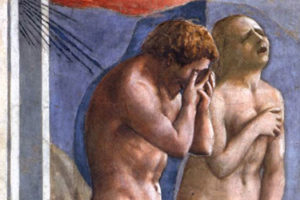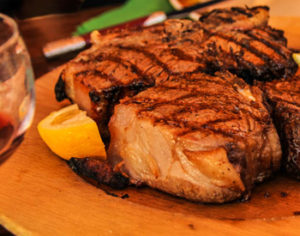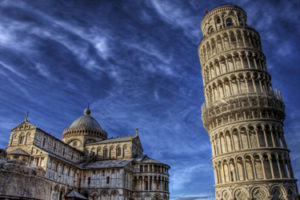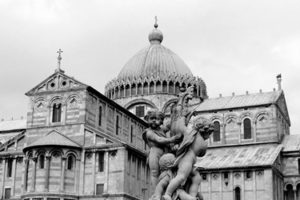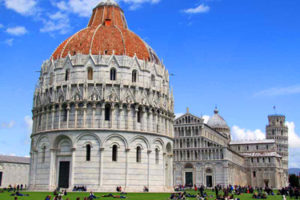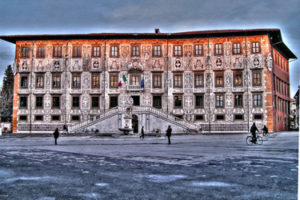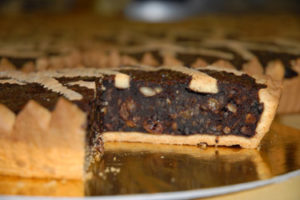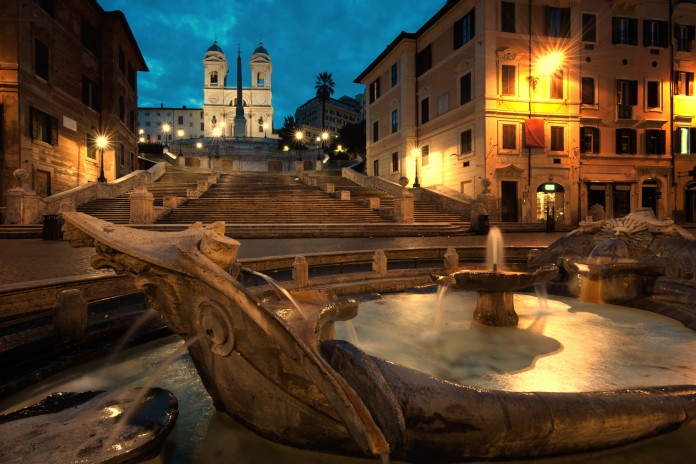Capri, the blue island in the Gulf of Naples, has always represented chic and expensive holidays. In these pages, instead, you will find the most beautiful things to do and see in Capri without spending a lot.
Close to Naples and Sorrento, Capri is an ideal destination for a holiday hit-and-run, maybe in one day. From the mythical Faraglioni to the Blue Grotto, from the Piazzetta to the villa of the Emperor Tiberius, you will discover how enjoy the beauty of Capri.
If you are looking for a hotel in Capri, we suggest you to choose among those offered by Booking.com. There are about 120 hotels with prices, pictures and comments of guests already stayed there. Go to Booking.com
Faraglioni in Capri
1
Faraglioni are one of the symbols of Capri. These are three big rocks close to the coast of Capri, immersed in the blue sea , and can be reached by boat.

The highest is 109 meters high, while the middle one has a natural cave that you can visit by boat. The name “Faraglioni” comes from the greek “Pharos”, and is due to the fact that here big fires were light to mark the route to sailors.
Did you know that each Faraglione has a name? The closest to the mainland is called Saetta (Lightning), the middle Stella (Star) and the outer Scopolo. Scopolo, the most external Faraglione , houses at the top of Mount Solaro, the only examples in the world of the Blue Lizard, that thanks to isolation and camouflage tooks on the colors of the sea and sky of Capri.
The Blue Grotto in Capri
2
The famous Grotto of Capri has been known since the Emperor Tiberius, who ordered the construction of a passage from his villa to the cave to swim.

The fame and name derived from the incredible blue of the water inside: when the weather is fine, the sea seems illuminated by an underwater light and you can see many silvery fish swimming under the water.
The entrance of the Blue Grotto is only one meter high and for this you have to lie down on the bottom of the boat while entering. Moreover it is for small boats that accommodate up to four people. During high season you could wait more than one hour to visit the Grotto, we suggest you hat, sunscreen and water. The tour lasts about 5 minutes and it is forbidden to enter by swimming and diving.
Where: The boats for the entrance to the cave can be reached on foot through the stairs from the center of Anacapri, or by boat from the sea.
When – Hours: Every day of the year from 9 am to 5 pm, but only with good weather conditions.
Tickets: € 3 full price, € 9 for people over 65, 11 € for children between 18 and 25 years.
Monte Solaro in Capri
3
Monte Solaro (589 meters high) is the “mountain” of Capri and the ideal place to have a wonderful view from the island to Naples and Salerno, enjoying the endless blue of the sea.

Here nest many bird species, including the peregrine falcon, and you can admire the typical flora and fauna of the Mediterranean.
The best time for an excursion to Monte Solaro is during the spring, when the flavour of freesia and wisteria guide you along the paths. We suggest you to visit the Hermitage of Santa Maria a Cetrella, in the past a place of spiritual retreat for monks, and the remains of Barbarossa Castle, built around the eleventh century, and in 1535, by the fearsome Barbarossa.
Where: Monte Solaro is reached by chair lift from the bus stop in Piazza Vittoria in Anacapri (ticket 10 € round-trip or 7 € one way) or by feet through a hike that takes about an hour and thirty minutes from the center of Anacapri.
When: Every day of the year, but the best time for walking is from April to September.
Tickets: Free by feet . 7 € or 10 € by chair lift.
Villa Jovis in Capri
4
Villa Jovis, dedicated to Jupiter by the Roman Emperor Tiberius, is one of the best preserved examples of Roman architecture in the Mediterranean. It is not the only Emperor’s residence in Capri, but it certainly represents one of the most great villas: it is a building that extends for 7 km square on the extreme promontory of Capri.

From here you can see Ischia and Procida, the Gulf of Salerno and the Cilento coast in a dreamy atmosphere. The villa was built in the 1st century. B.C. and here the Emperor spent 12 years, from the island managing the Roman Empire.
Today you can visit its remains: in the middle there are some large tanks for rain water and all around a series of rooms that were divided between those reserved to the emperor and those for employees, the slaves and the hall of throne. The remains of the Villa were raided during the Bourbon period, but the villa was restored in 1932 thanks to Amedeo Maiuri, director of the Archaeological Museum of Naples.
The small square – La Piazzetta in Capri
5
Piazza Umberto I, the fashion heart of Capri, is known worldwide as ” La Piazzetta”.

You can go there for a coffee, chat, enjoy the view from the terrace and maybe do a little bit of VIP watching .
Until the last century, the small square of Capri housed market stalls, while today it is the symbol of the sweet life of Capri and at the tables of the coffee bars, there are personalities of jet set and simple tourists.
From the square start two main streets to explore Capri and go into the famous Via Camerelle, the shopping street of Capri, where you can find the best international fashion label boutiques. Take advantage of a break in the square for a drink and maybe a visit to the Ignazio Cerio Capri Centre, a small museum, which is located nearby and preserves 20,000 archaeological and natural artifacts of its history.
Anacapri
6
On the slopes of Monte Solaro, just 15 minutes by bus from the “little square”, there is Anacapri, the largest municipality of the island. Made by narrow streets and colourful alleys that reveal many squares, beaches and historical places to discover.

In fact, here there is the chair lift to the summit of Monte Solaro, or along Via Pagliaro you can reach by land the famous Blue Grotto, or if you love wildlife and want to enjoy the sun over the sea, you can reach Punta Carena and its imposing lighthouse, the largest in Italy after Genoa.
Anacapri also houses one of the most beautiful and representative Neapolitan Baroque churches: the Church of San Michele Arcangelo, with its magnificent majolica floor depicting the expulsion of Adam and Eve from Paradise. Another attraction not to be missed is the Red House, former home of the American Colonel John Clay Mackowen. It now houses a permanent exhibition of paintings depicting Capri and Anacapri realized between the nineteenth and the twentieth century, and a large collection of archaeological finds from the Blue Grotto.
The beaches of Capri
7
Capri is a rock island : you will not find large sandy beaches , but rocky coves and platforms from which you can dive. But the water is wonderful: the water is clear and the sea bottom blue-green . In Capri there are free beaches and private beaches with umbrellas, showers, coffee bars and restaurants.

In the Port area, in Marina Grande, you can find the largest beach of the island: it is a rocky cove facing the blue. It is a few minutes far from the hydrofoil terminal and houses both a free area than one with loungers and umbrellas, bar and restaurants. On the opposite side of the island there are also the beaches of Marina Piccola, which is reachable by feet through the center or by bus. Here too you can find two beaches and several establishments: small coves of pebbles, the most frequented by islanders and tourists.
Those who enjoy the breath-taking sunsets cannot miss to swim in the Faro area: here the sun goes into the sea in a unique scenario. There are free areas and private beaches that can be reached by bus or by walking for about an hour from the center of Anacapri.
The Tour of the Capri island
8
The best way to enjoy Capri from the sea around the island is by boat. At the Marina Grande harbour, there are many companies that offer tours of the island in shared boat.

Departures are very frequent and you can choose between tours of one or two hours. Most of the island tours also includes a stop at the Blue Grotto for those who want to visit it (you will pay separately the ticket for the grotto).
The tour of the island starts from Marina Grande and coasts the island touching the most beautiful jagged coastline, as Villa Jovis and the Faraglioni. Then it continues to Marina Piccola: here the coast has many coves and hidden bays such as the Green Grotto, which takes its name from its emerald color. The tour continues with the lighthouse and the hidden side of Capri. In this area there is the Blue Grotto.
Where : from the harbour
When – Hours: Every day from 9 am to 5 pm , with good weather conditions.
Tickets: € 17, discounts for groups
Things to eat in Capri
9
We cannot talk about Capri and forget the Caprese: mozzarella and tomato, olive oil, salt, oregano, basil.

A simple and unique dish, famous throughout the world. The secret is in the simplicity and above all in the ingredients, fragrant and tasty as the rest of its cuisine. Caprese is perfect as an appetizer or as a main dish, while among the first courses you can taste the Capri ravioli, homemade with Caciotta of Capri and marjoram, and ravioli made of fish, such as linguine with sauce redfish. Among the second courses there are fish, shellfish and seafood: do not miss the lamb with potatoes and soup of mussels. You can finish the meal with the Caprese cake, delicious paste made of almonds and cocoa, and the Limoncello made with lemons of Capri, served in an icy glass.
Where to sleep in Capri
10
Certainly Capri is not known as a cheap island but finding a place to sleep is less expensive and difficult than you think.

Especially out of season, the island offers accommodation in small hotels, bed & breakfasts and apartments affordable to all. Obviously during the high season in the big luxury hotels, the prices are shockingly high. The price is influenced by the position and the proximity to the most chic places of the island (square, shopping streets). There are many offers with prices starting from about 90 euro per night in double room, breakfast included.
If you are looking for a hotel in Capri, we suggest you to choose among those offered by Booking.com. There are about 120 hotels with prices, pictures and comments of guests already stayed there. Go to Booking.com


 This tangled maze of narrow streets, squares, noble buildings with colorful façades, will surprise you during the (few) days of sun and will show you its romantic side during the night. The main points of interest of the Old Town are the Market Square (see point 2),the Castle Square (See point 4), the Barbican, the churches of St. John and St. Martin.
This tangled maze of narrow streets, squares, noble buildings with colorful façades, will surprise you during the (few) days of sun and will show you its romantic side during the night. The main points of interest of the Old Town are the Market Square (see point 2),the Castle Square (See point 4), the Barbican, the churches of St. John and St. Martin. Today is just a meeting point for tourists, attracted by the tables of cafés and restaurants, the gift shops in the alleys. On the four sides of the square there are the colorful houses, entirely rebuilt after the bombings of World War II, and designed by the Italian painter Bellotti. Following the best tradition of the East countries, the houses have strange names: the Basilisk, the Lion, Golden. At the center of the square there’s the statue of the Little Mermaid, considered the sister of the most famous one in Copenhagen. According to legend, this mermaid lived in the Vistula (river Warsaw) and annoyed the fishermen. Captured, but later released, by that time she watches over the Polish capital.
Today is just a meeting point for tourists, attracted by the tables of cafés and restaurants, the gift shops in the alleys. On the four sides of the square there are the colorful houses, entirely rebuilt after the bombings of World War II, and designed by the Italian painter Bellotti. Following the best tradition of the East countries, the houses have strange names: the Basilisk, the Lion, Golden. At the center of the square there’s the statue of the Little Mermaid, considered the sister of the most famous one in Copenhagen. According to legend, this mermaid lived in the Vistula (river Warsaw) and annoyed the fishermen. Captured, but later released, by that time she watches over the Polish capital. The ruins were left in the square until 1971 when the reconstruction began and ended in 1984. Don’t miss the collection of paintings with two works by Rembrandt. At the center of the square there’s the column of Sigismund, erected in 1644 in honour of the king who moved the capital from Krakow to Warsaw. From the Square starts the Royal Route that, with a route of 4 km, brought to the old palace of Wilanow (see point 4). The Royal Route is actually made up of three pieces of the road with different names in which there are Baroque and Renaissance palaces, churches, several monuments, cafés, luxury restaurants and souvenir shops.
The ruins were left in the square until 1971 when the reconstruction began and ended in 1984. Don’t miss the collection of paintings with two works by Rembrandt. At the center of the square there’s the column of Sigismund, erected in 1644 in honour of the king who moved the capital from Krakow to Warsaw. From the Square starts the Royal Route that, with a route of 4 km, brought to the old palace of Wilanow (see point 4). The Royal Route is actually made up of three pieces of the road with different names in which there are Baroque and Renaissance palaces, churches, several monuments, cafés, luxury restaurants and souvenir shops. It was built for the Polish king Jan III Sobieski at the end of 1600 and over the centuries there have been many owners such as kings, nobles and wealthy magnates. The sumptuousness is still evident, with frescoes, antique furniture and a nice gallery of pictures (with a Pietà by Cima da Conegliano). Magnificent the outdoor park with ponds, Italian and English gardens, fountains, statues. Surely the perfect stop during your visit to the several monuments.
It was built for the Polish king Jan III Sobieski at the end of 1600 and over the centuries there have been many owners such as kings, nobles and wealthy magnates. The sumptuousness is still evident, with frescoes, antique furniture and a nice gallery of pictures (with a Pietà by Cima da Conegliano). Magnificent the outdoor park with ponds, Italian and English gardens, fountains, statues. Surely the perfect stop during your visit to the several monuments. Among deaths from starvation, disease, deportations, an indefinite number of Jews died. Inside the Jewish area, almost everything was destroyed. Along the border, where there was the wall built by german people, there are writings in cast iron on the sidewalk. To commemorate the Warsaw of Jews, and to remember what it was, it has been created a Remembrance Street marked by 16 granite blocks and the Monument to the Heroes of the Ghetto representing men, women and children struggling in the flames and a row of Jews going to the concentration camp. In the old ghetto there are just few palaces in Via Prozna: left in ruins, as they were reduced by the Germans, and on the façades there are big pictures of Jews living in the ghetto, and killed by the Nazis.
Among deaths from starvation, disease, deportations, an indefinite number of Jews died. Inside the Jewish area, almost everything was destroyed. Along the border, where there was the wall built by german people, there are writings in cast iron on the sidewalk. To commemorate the Warsaw of Jews, and to remember what it was, it has been created a Remembrance Street marked by 16 granite blocks and the Monument to the Heroes of the Ghetto representing men, women and children struggling in the flames and a row of Jews going to the concentration camp. In the old ghetto there are just few palaces in Via Prozna: left in ruins, as they were reduced by the Germans, and on the façades there are big pictures of Jews living in the ghetto, and killed by the Nazis. Łazienki today is a museum, a place for events of all kinds and a place for walks. Wandering through the park you can meet the Palace on the Water, Myślewicki, the White House, the Orangery, temples, statues. A point of the park loved by Warsaw is the Monument to Fryderyk Chopin, born in the Polish capital, widely considered the prince of romantic music. Under this monument every Saturday and Sunday, there are also concerts of famous pianists. If you visit Warsaw in the spring or summer, don’t miss Łazienki: you will not regret.
Łazienki today is a museum, a place for events of all kinds and a place for walks. Wandering through the park you can meet the Palace on the Water, Myślewicki, the White House, the Orangery, temples, statues. A point of the park loved by Warsaw is the Monument to Fryderyk Chopin, born in the Polish capital, widely considered the prince of romantic music. Under this monument every Saturday and Sunday, there are also concerts of famous pianists. If you visit Warsaw in the spring or summer, don’t miss Łazienki: you will not regret. Actually we think that the Polish people could do without it, but now that the communist regime is far away, it can be appreciated for what it is: a 42 floors tower (the highest in Poland), with 3,000 rooms, offices, museums, swimming pool, cinema. The attraction for tourists is a terrace (trzydziestka) at the 30th floor where they can enjoy a unique view over the rooftops of Warsaw and beyond.
Actually we think that the Polish people could do without it, but now that the communist regime is far away, it can be appreciated for what it is: a 42 floors tower (the highest in Poland), with 3,000 rooms, offices, museums, swimming pool, cinema. The attraction for tourists is a terrace (trzydziestka) at the 30th floor where they can enjoy a unique view over the rooftops of Warsaw and beyond. To build Praga, in fact, it was burned an entire forest. It was a really dangerous place until a few years ago, but today Praga district is the trendy district of Warsaw (but be careful). It wasn’t destroyed by the bombings of World War II but became a bad place for many decades. It regained importance when Roman Polanski chose to shoot the film “The Pianist” in 2002. The Jewish Ghetto, where the story takes place, no longer existed and the rest of Warsaw was too new. So he chose the Praga district . Today it’s the favorite destination for artists, designers, architects and photographers.
To build Praga, in fact, it was burned an entire forest. It was a really dangerous place until a few years ago, but today Praga district is the trendy district of Warsaw (but be careful). It wasn’t destroyed by the bombings of World War II but became a bad place for many decades. It regained importance when Roman Polanski chose to shoot the film “The Pianist” in 2002. The Jewish Ghetto, where the story takes place, no longer existed and the rest of Warsaw was too new. So he chose the Praga district . Today it’s the favorite destination for artists, designers, architects and photographers. We have to say that Poland is not famous for its gastronomy but Warsaw, fortunately, is an exception: surely there are no many dishes, and after a few days you might not want to eat meat and potatoes for some months. However, you should taste Piroghi (ravioli stuffed with cheese, meat or other) barszcz (beetroot soup and ravioli) the chlodnik (a cold soup of sour milk) and bigos, meat stew. All this, of course, accompanied by the excellent Polish beer.
We have to say that Poland is not famous for its gastronomy but Warsaw, fortunately, is an exception: surely there are no many dishes, and after a few days you might not want to eat meat and potatoes for some months. However, you should taste Piroghi (ravioli stuffed with cheese, meat or other) barszcz (beetroot soup and ravioli) the chlodnik (a cold soup of sour milk) and bigos, meat stew. All this, of course, accompanied by the excellent Polish beer. For a double in the down town center in a 3-star hotel prices vary from 40 to 80 Euros per night. Hotels are numerous, over 500, but many are in the suburbs. If you have limited time we recommend a hotel in the Old City which will cost a little bit more, but you will save your time.
For a double in the down town center in a 3-star hotel prices vary from 40 to 80 Euros per night. Hotels are numerous, over 500, but many are in the suburbs. If you have limited time we recommend a hotel in the Old City which will cost a little bit more, but you will save your time.